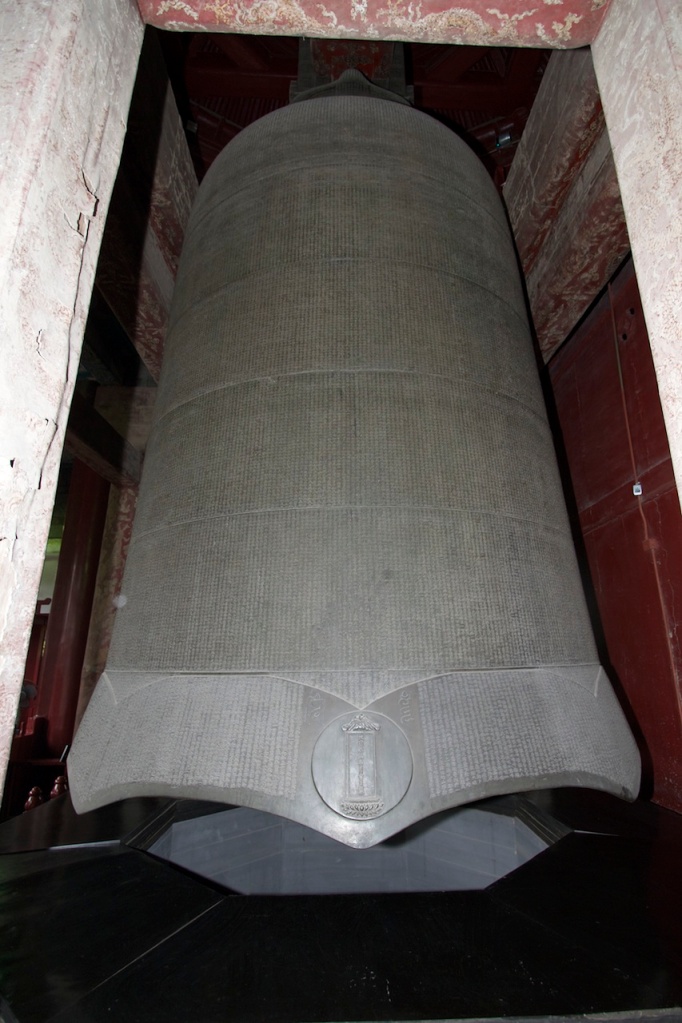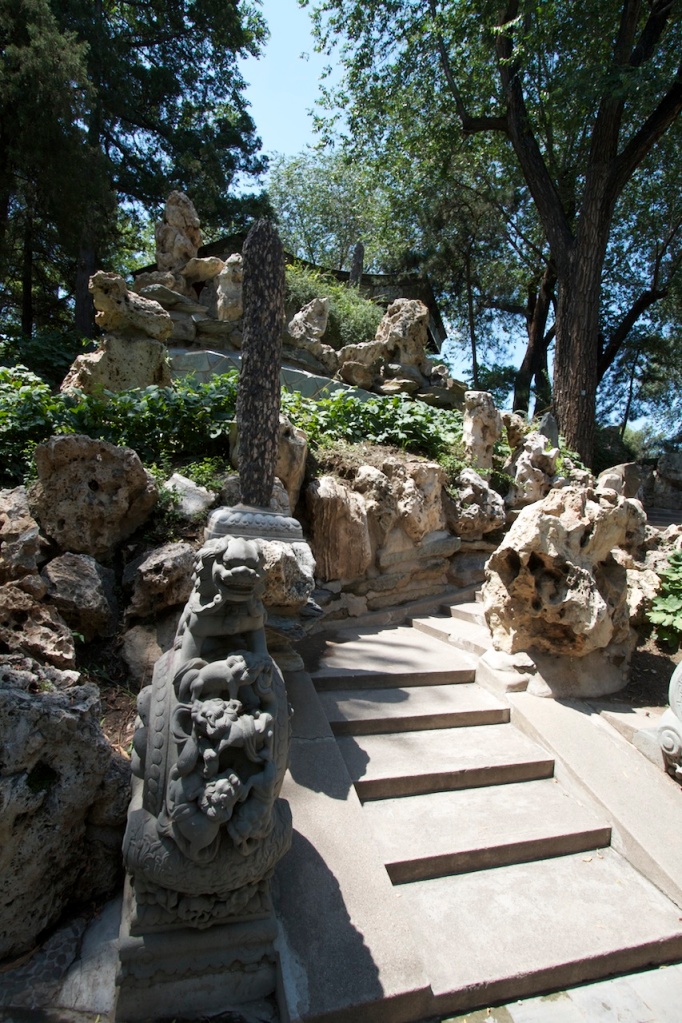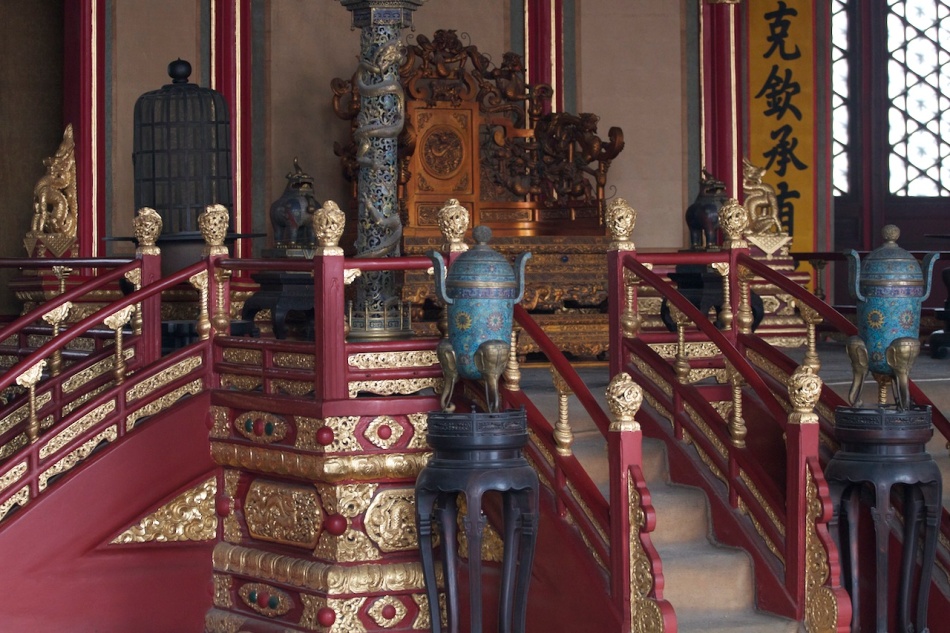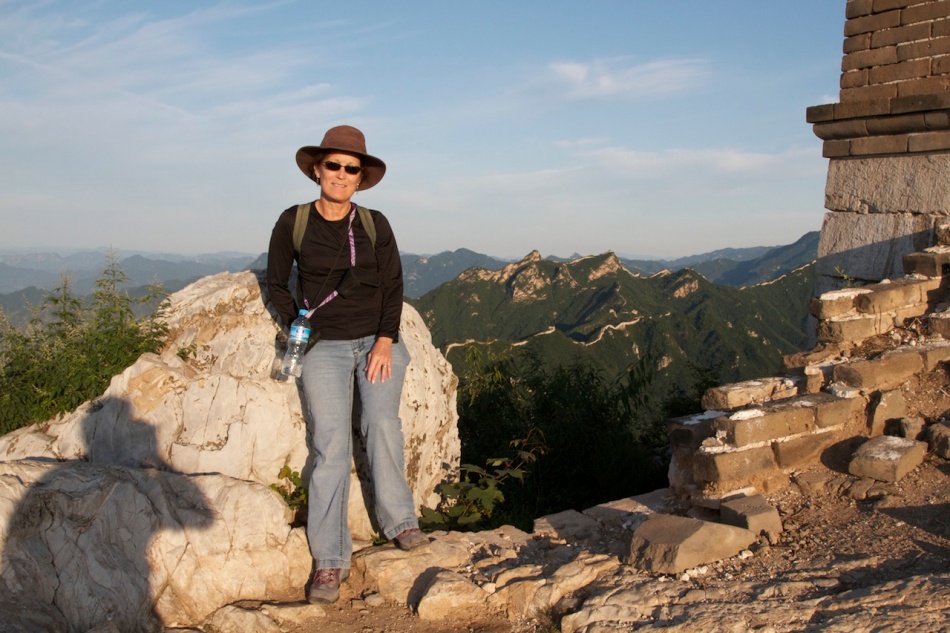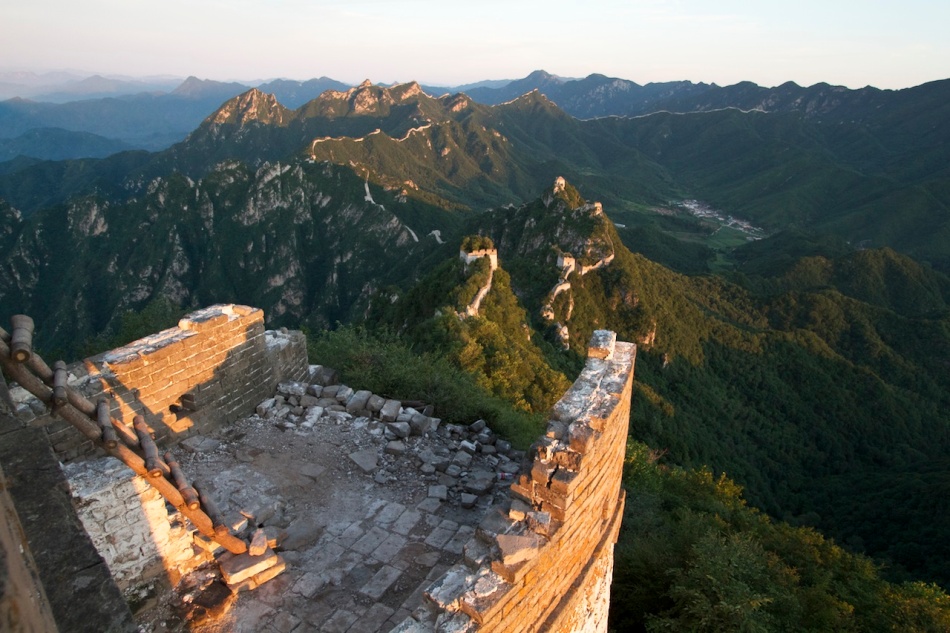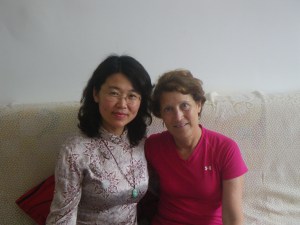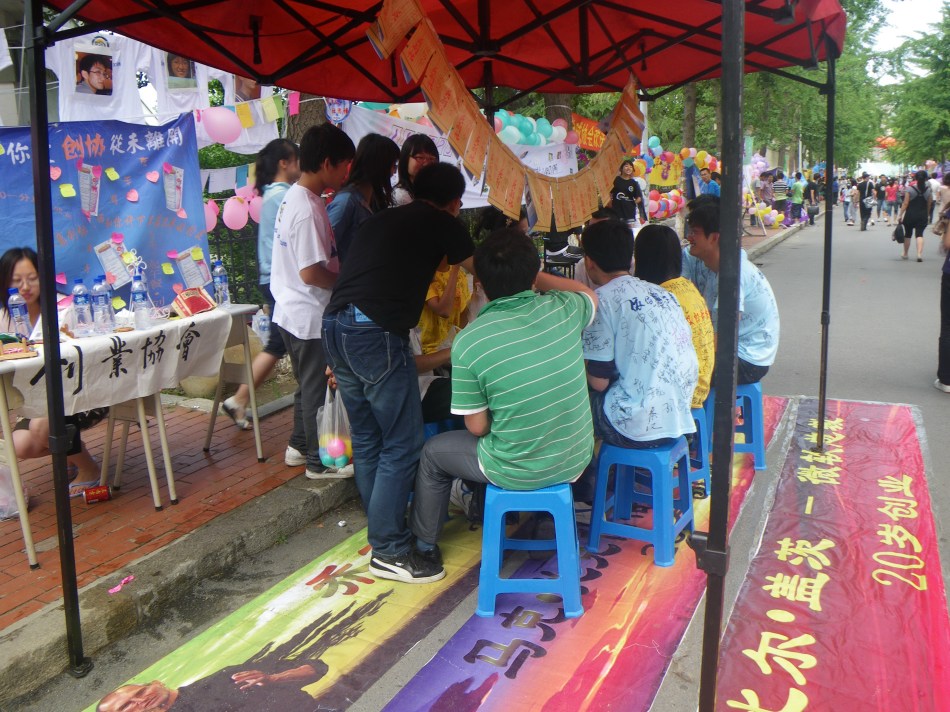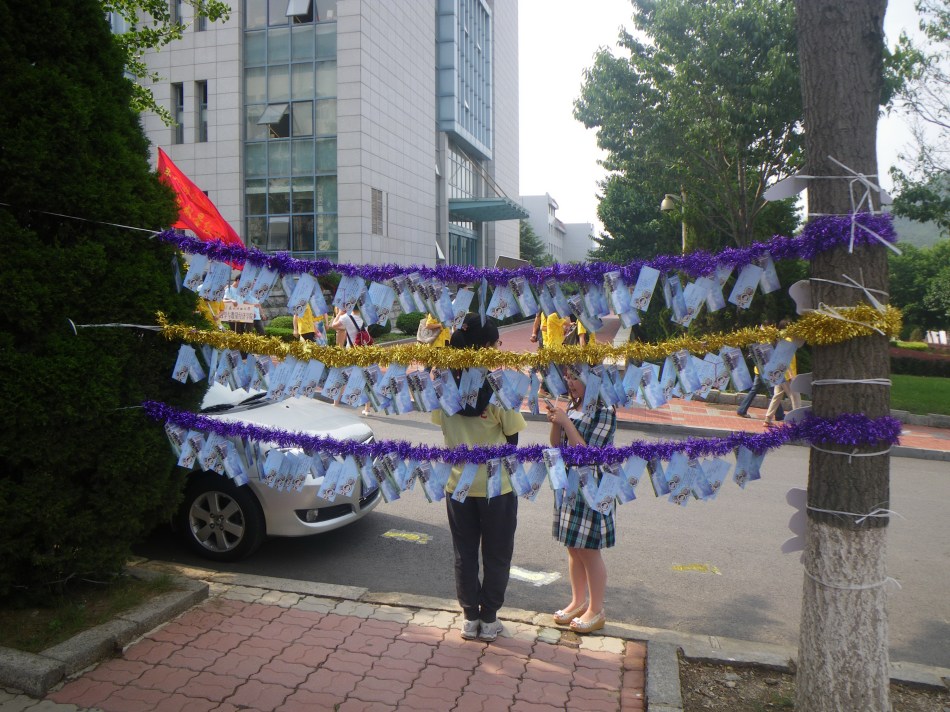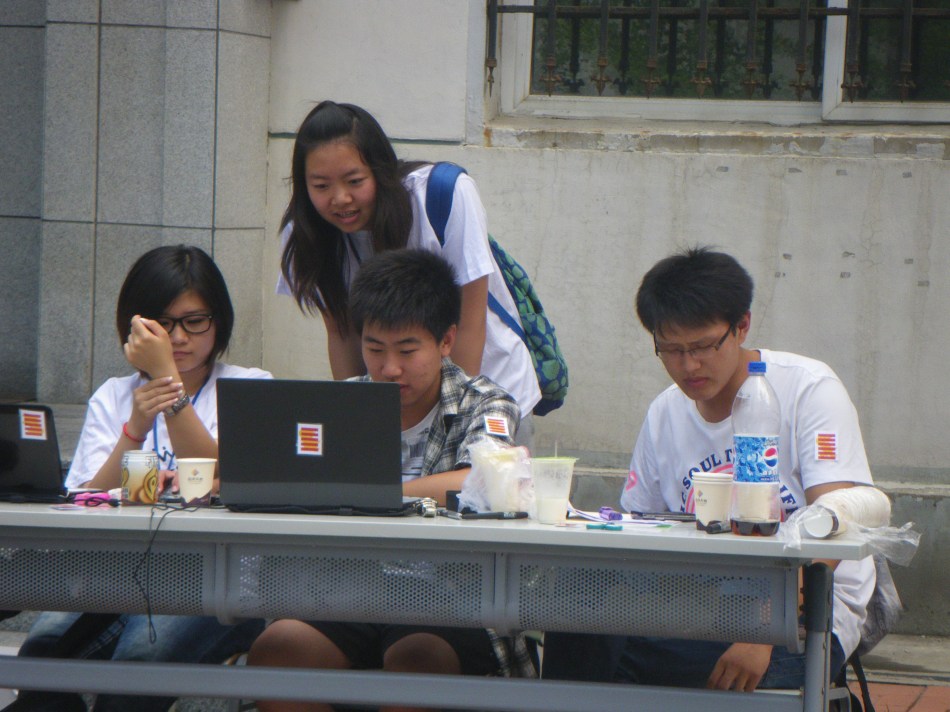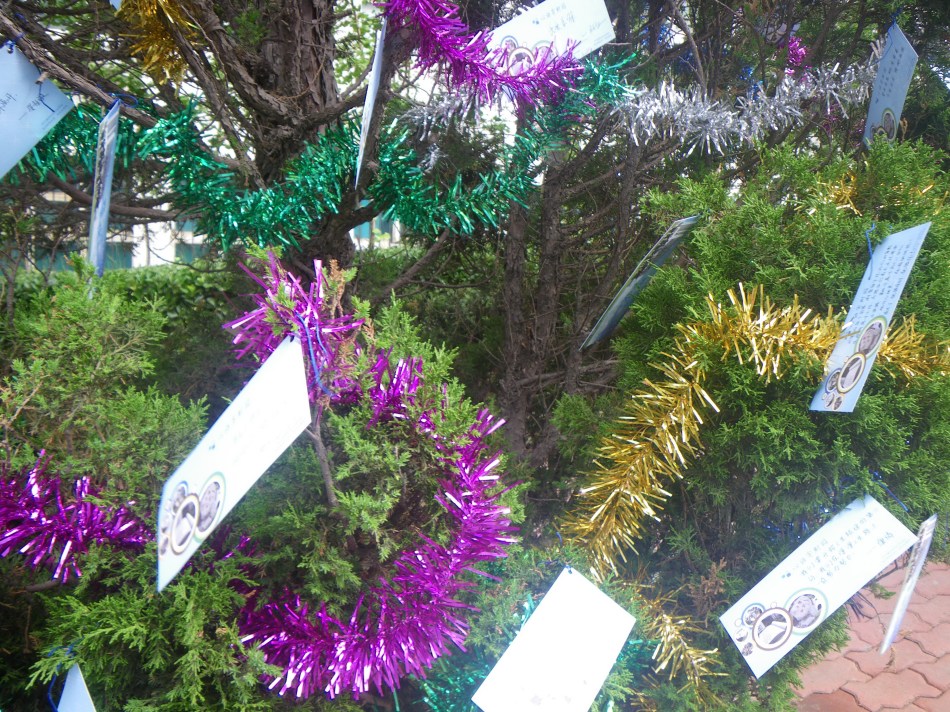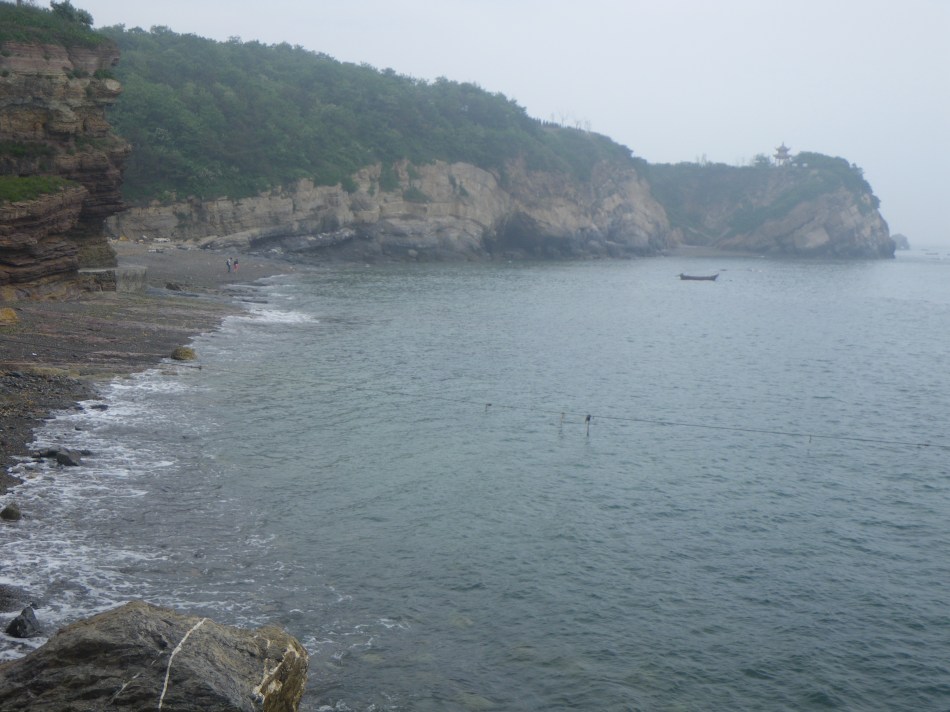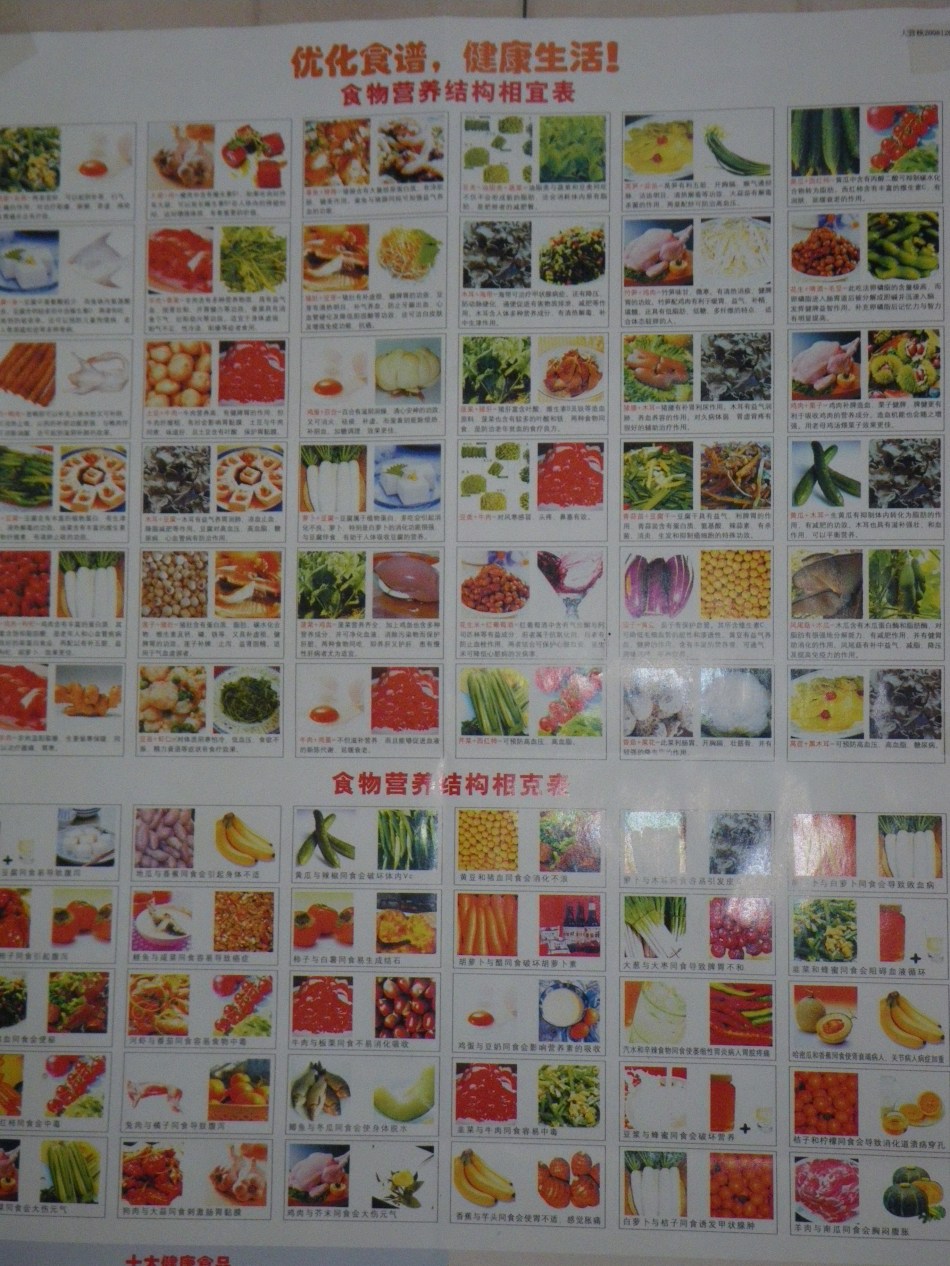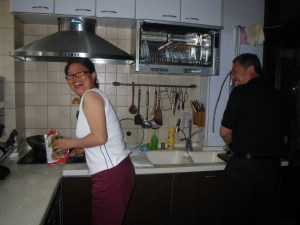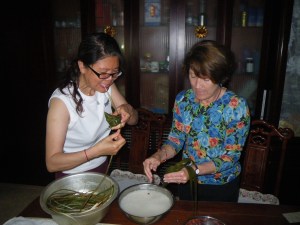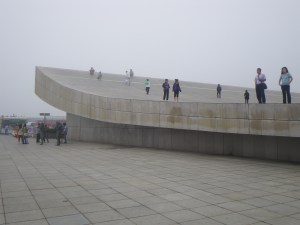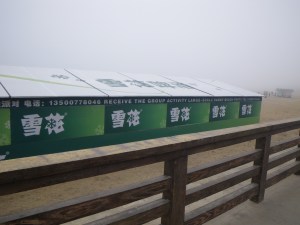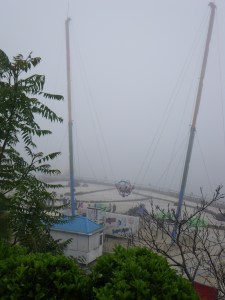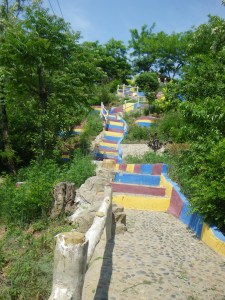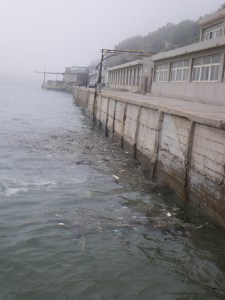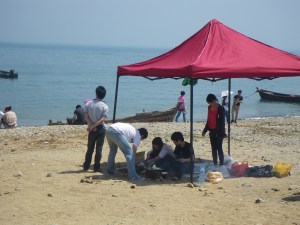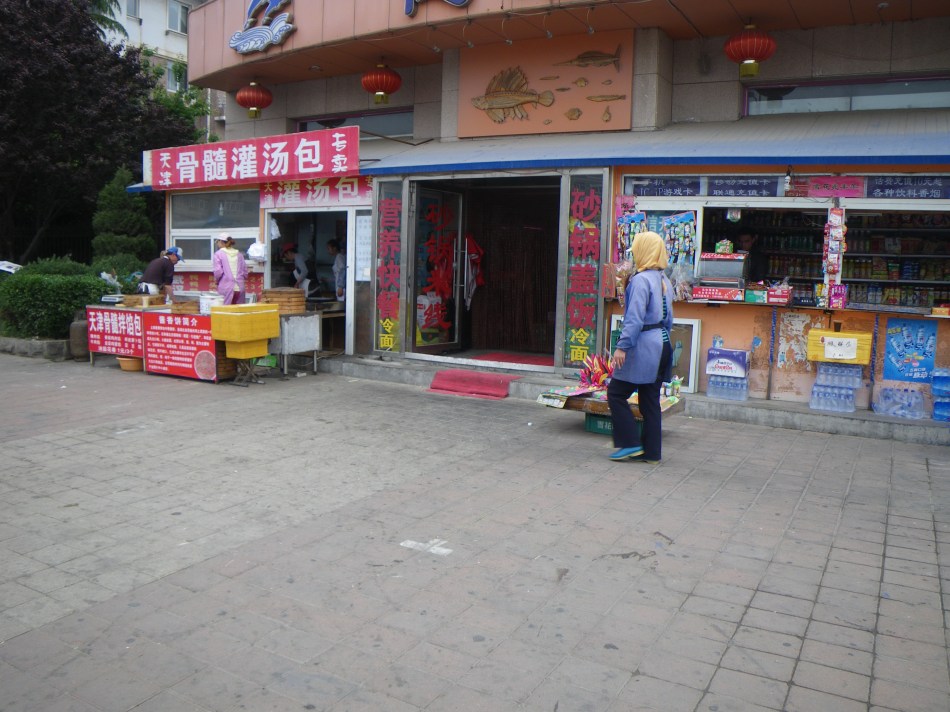June 10th
On CCTV they announced that today, high school students from two minority groups were taking ethnic language tests as part of the Gaokao—the Tibetan Language Test and the Mongolian Grammar Test. This has been required as a way to preserve the native languages of students from Tibet and Mongolia. Their scores count toward 50% of their language score, with the Mandarin language test comprising the other half.
One of the other news items was that Taiwan was opening up its borders to individual mainland China citizens. Up until now, they have only allowed Chinese tour groups. This will allow people to travel without a restrictive itinerary and family members can more freely visit.
Elsie (I misspelled her name in previous posts, then went back and edited them) and I took bus 16, a double-decker, sitting in the front on top to Zhoushan Square. While walking to an art museum we dodged cars in the streets (there are few lights and lots of traffic circles) and sidewalks. On the sidewalk a car zoomed past us, stopped, and parked inches from the steps of a hotel entrance. I was annoyed and explained to Elsie the consequences of driving and parking on sidewalks in America. She thought it was funny that something so commonplace in China would unnerve me. At one point I told her I’d be more at ease if we’d follow behind older pedestrians because they’ve been weaving their way around traffic many years and were obviously successful at it. So that’s the strategy we implemented; it worked quite well.
It turned out that the art museum was closed, despite Elsie having checked their website. They were setting up new exhibits and the walls were barren. Elsie assertively told the curator that an American professor came all the way to see his museum, and asked what could he do to accommodate me. I was a bit chagrined. My temporary embarrassment passed when he stepped into the museum and came out with a book of one of the featured artists with colored plates of his work, offering it as a gift for our troubles.
We walked along Russian Front Street, lined with 1900 era homes and buildings from the Russian occupation. In front of them were vendors selling everything from produce and street food to nested Russian dolls and scarves (Chinese-made). We had traditional tea served at Ten Fu’s, a chain of high end tea houses. As the jasmine tea steeped in a glass carafe, light amber tea swirled from the flower bud inside. The bud opened and released a second flower; this one was orange-colored. The final stage occurred when the orange flower burst open and a stem climbed upwards with small lilies attached. The hostess pointed out that the beauty of this tea lasted well after you’ve finished drinking it. Of course I bought some. We were served assorted tea cakes, tea candy, and fruit and rose hips fermented in oolong tea.
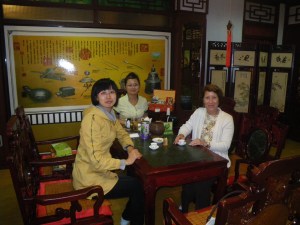
At the teahouse on Russian Front St with Elsie
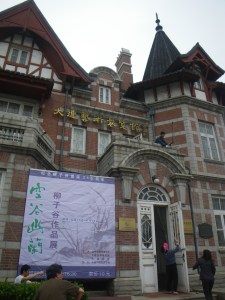
Dalian Art Exhibition Museum
Elsie wanted to eat Western food and learn how to navigate the intricacies of napkins, knives, forks, etc. so we went to a restaurant popular among college students. Housed exclusively on university campuses, this particular restaurant was at Dalian Neusoft Institute of Information, unfamiliar to both of us. We wandered the campus until Vera, a student, helped by escorting us to the restaurant. She said that after lunch she’d love to show us around her campus. We were served their version of a standard western meal consisting of mango sorbet, orange juice, spaghetti pasta with beef and soy sauce, pizza without tomato sauce, and steak. Since this was served on platters in the middle of the table we asked for separate plates to more closely replicate a western table setting.

Elsie eating pizza, western style

Elsie and the western lunch
After dinner Vera and her friend Rachel joined us and gave us a tour of the campus grounds, library, student art gallery, and bell tower. The campus was like something out of a sci-fi novel. Geometric, ultramodern buildings were stacked along the mountain, connected by walkways and terraces. It was remarkable. The grounds were covered with gardens and sculptures of famous scientists—we saw statues of Planck, Marconi, Zuse, and Sanqiang.
Their futuristic library was an arcing multilevel building topped by a glass dome. Inside, the student reading room was directly under the dome, with a garden and a red pagoda-style awning in the center, surrounded by rows of concentric tables. The tables were full of approximately 200 students, many with 2-4 piles of books 1 to 2 feet high. They worked in complete silence. Posters were hung with motivational statements. One read, “My wasteful today is the tomorrow those losers are begging for.”
That night I took Lucia and Shirley, graduate students, out to dinner at a restaurant of their choice. They picked the Korean Barbeque restaurant where we spent the entire evening eating food and talking about food. I taught them how to grill since they’d always have their parents perform this task. As they took turns cooking our dinner on the grill built into our table, we went into excruciating detail about each of our favorite foods, our local food specialties, and our mothers’ best cooking. We ended the evening with a walk to the jiaozi shop—something they hadn’t known about.
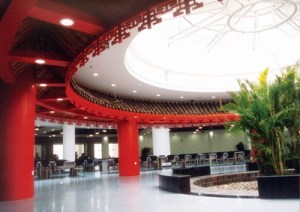
Library pagoda

Elsie and statue of Zuse

Vera, Rachel, and statue of Zuse

Dalian Neusoft Library


Vera and Rachel on their campus
June 11th
I escaped from doing laundry and some work to walk for a couple hours and take photos of the lovely campus gardens. You’ll see from the photos that DUFE gardens combine sculpture, flowers, and greenery. These are tucked away in areas all over campus. ‘Doing laundry’ now has a new meaning for me because dryers aren’t used at all. Laundry is hung out to dry. Here in International Housing we pin our laundry up on clotheslines in the courtyard. Apartments all over Dalian have racks either inside or outside their windows where laundry is hung. It’s a great way to conserve energy. 




June 12th
I continued to do work, taking a midday break to meet Cynthia, a student, and walk together in Black Reef Park. I returned and worked some more.
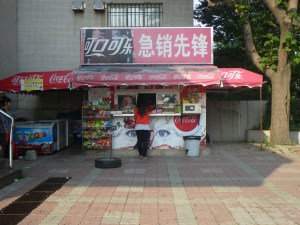
Black Reef vendor with Coca Cola banner

Exercise stations in the square in the Black Reef hutong

Senior citizens working at an exercise station in the hutong
June 13th
I presented to the graduate students a modified version of Powerpoint that included Facione’s model of critical thinking, its subskills, and its emphasis across levels of schooling in America. I encouraged them to formulate questions implementing these subskills. Some of there questions were: What religion do you believe in and how has it shaped your life? How do you teach children with disabilities without them feeling inferior about themselves? In X [names a TV show unfamiliar to me] they show college girls having sex often with different boys. Is this typical of real American college students? How do you budget your money? Americans seem to change jobs often, is this due to getting better pay or disenchantment? What are the different levels of universities in America and how are they different in their requirements? What do you think of the culture of Japan? What do Americans think about Chinese products? What kind of food do you like? [the easy question…]
I had dinner with George and Michael, who’d been to Meredith several years ago. We talked about the campus, faculty who had hosted some of their activities, American food, and funny stories about our lives. Michael was mildly razzed for driving to campus daily despite living within a 20 minute walk from his home, yet he jogs every single day after dinner. He described a scenic trail he takes that winds its way up and the down a small seaside mountain with tombs nearby. I thought I’d try to find it tomorrow.
June 14th
Today was a full day…
Lucia and I took an early morning bus to Peace Mall to buy specialty items from the largest supermarket in the area. We wanted to beat the rush hour commuters and shoppers. During the bus trip we practiced our language skills, notably I rehearsed the four different Mandarin tones and she worked on vocabulary. As is common in most malls, this one had the supermarket on the first, and then the next floor was ‘women’s’, then ‘young people’s’, then ‘men’s’, and the top floor contained restaurants.
We joined Shirley for lunch at the campus jioazi shop and ordered three different types to share. They laughed about an insider joke in which they say to each another, “You’re not welcome.” I taught them, “Thanks, but no thanks.” We also discussed the different dialects in China which are so unique that they can’t understand one another’s speech even though they share the same written language. I gave them examples of various dialects found in the states. They enjoyed the Bostonian dialect.
I went for a beautiful walk, finding the trail up the small coastal mountain that Michael had described. Once I began to descend on the side facing the sea, below me were the arched shapes of hundreds of tombs interspersed among pine trees. Narrow trails cut across and zigzagged, connecting the tombs. Some brick vaults were simple constructions, others had granite tablets containing writing, and still others were ornate with carved lions and granite slabs that served as porches jutting out with a view of the sea. Most of the tombs had two recesses for keeping incense burners, and piles of papers with prayers written on them, weighed down with bricks. Many were decorated with silk and plastic floral bouquets. I was in awe of the effort spent in erecting and tending these graves, a challenging task given the rough topography.
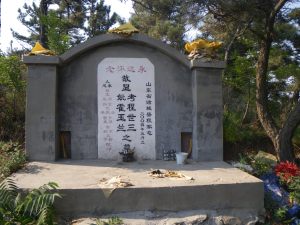
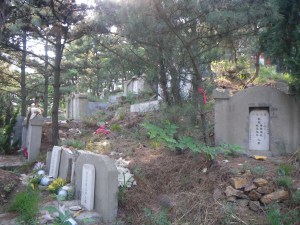




Prayer sheets placed on top of tomb



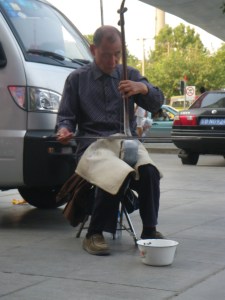
Man playing erhu on the sidewalk across from campus
In the evening I went to Xinghai Park with Swallow, Zoe, and Rita, graduate students. They brought drinks for everyone, including my favorite green tea (they had noticed the brand I brought with me to class) and clean cushions to sit on when we reached the park. The park was completely different once it became dark, with multi-colored lights from the rides and surrounding city buildings and fewer people. Once the dancers finished, musicians came out. We listened to a band (a drummer, 2 saxophonists, 2 violinists, an accordion player, and 2 singers) perform traditional and contemporary music.
The evening’s most unexpected treat was a trio playing traditional instruments: the pipa (similar to the Spanish guitar), erhu (the same instrument I saw a man playing today during my walk; check out the photo), and di (a reed). Most of the songs were instrumental, the pipa player sang a few times. The four of us sat on rocks across from the musicians, as a full moon shone through the tree canopy above us. The classical Chinese music was beautiful. Zoe explained the songs’ meanings and their regional origin. During one of the songs we all were commenting on the perfect synchronicity—we were watching the moon’s rays dancing on the water as we were listening to lyrics describing that very same thing—lyrics which had been written thousands of years ago.
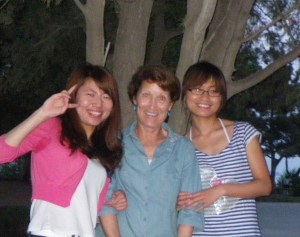
Xinghai Park: Swallow and Rita

Zoe, Rita, and Swallow in Xinghai Park


